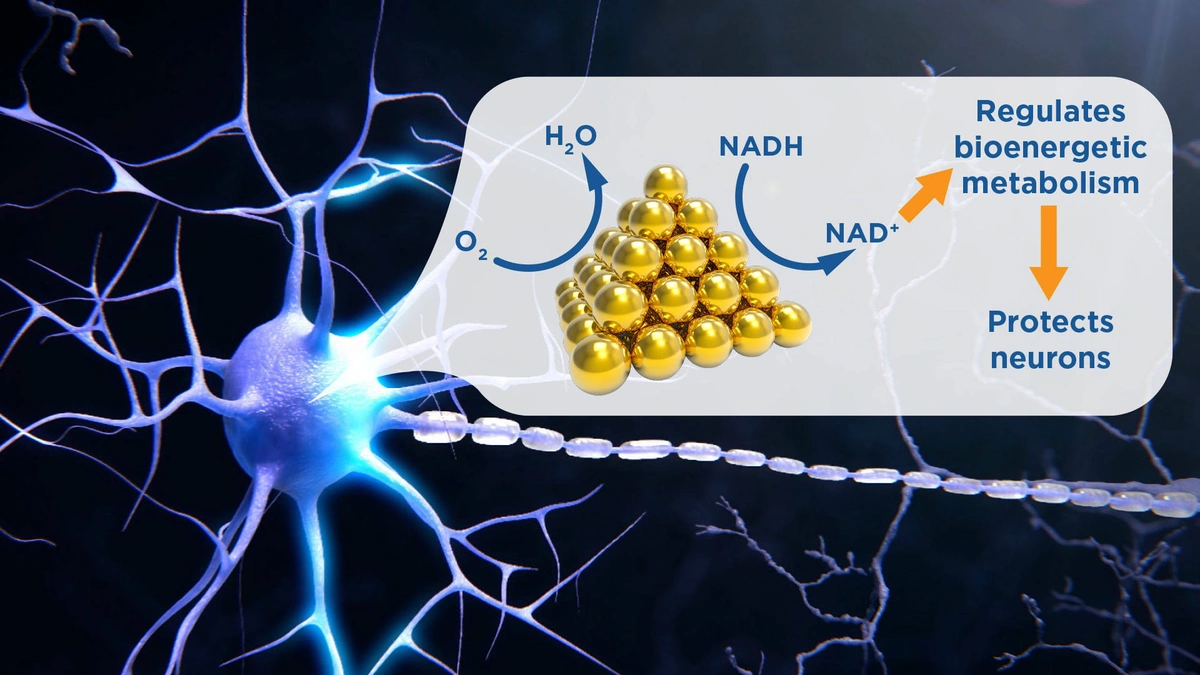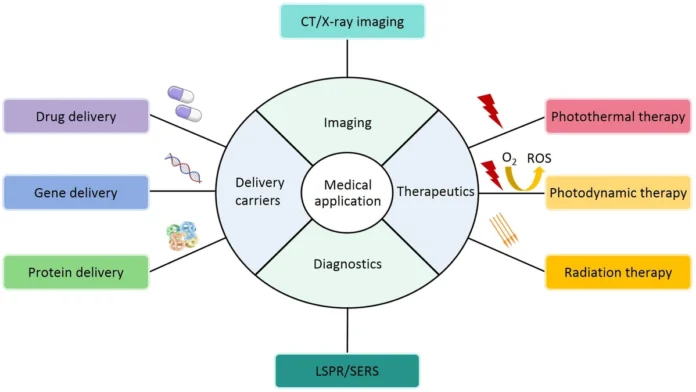Okay, here’s the thing: scientists are finding gold nanoparticles in spruce needles. I know, right? Sounds like something out of a fantasy novel. But before you start planning your trip to the nearest forest with a pickaxe, let’s dig a little deeper. This isn’t about striking it rich; it’s about understanding our environment and potentially unlocking new technological marvels. What fascinates me is the ‘why’ behind this discovery. Why are these nanoparticles there? What does it mean for us?
The Curious Case of the Golden Spruce

So, what’s the big deal about gold nanoparticles in spruce needles? Well, it turns out that these trees, like tiny, silent miners, are absorbing trace amounts of gold from the soil. Then, they concentrate it in their needles. This isn’t a new phenomenon – plants have been known to accumulate various metals – but the focus on gold is definitely intriguing. Researchers believe this could be an indicator of gold deposits in the area. Think of it as nature’s own treasure map. According to research published in Environmental Science & Technology, the presence of these gold particles can provide valuable insights into subsurface geology.
Why This Matters (The Analyst’s Take)
Here’s where the ‘why’ really kicks in. It’s easy to shrug this off as a quirky scientific finding, but it has some serious implications. Firstly, it gives us a non-invasive way to explore for gold deposits. Instead of tearing up the earth with heavy machinery, we can simply analyze spruce needles. That’s a win for the environment, right? But more importantly, it tells us something profound about the interconnectedness of life and geology. The Earth is a complex system, and even something as seemingly inert as gold is constantly cycling through it. It opens doors to understanding biogeochemical processes in new ways.
And, beyond the environment, there’s potential in nanotechnology applications. Gold nanoparticles are already used in medicine, electronics, and various industrial processes. Understanding how nature creates and concentrates them could lead to more efficient and sustainable methods of production. Let’s be honest – our current methods for obtaining gold aren’t exactly eco-friendly. This could offer a greener alternative. Imagine a future where gold for your smartphone comes from sustainably harvested spruce needles!
The Nanotechnology Angle | A Golden Opportunity
Speaking of nanotechnology , let’s dive a little deeper into the potential applications of these naturally occurring gold particles . The size and shape of nanoparticles dramatically influence their properties. Naturally occurring nanoparticles might have unique characteristics compared to those synthesized in a lab. This could unlock new functionalities in various fields.
In medicine, gold nanoparticles are being explored for targeted drug delivery and cancer treatment. Imagine using naturally derived nanoparticles for these applications, potentially reducing the risk of toxicity. In electronics, they could enhance the performance of sensors and circuits. What fascinates me is the potential for biomimicry – learning from nature to create better technology. After all, nature has had billions of years to perfect its designs! Scientists are also exploring the use of gold nanoparticles in environmental remediation .
Spruce Needles as Environmental Indicators | A Deeper Dive
But, and this is a big ‘but,’ the presence of gold nanoparticles in spruce needles can also tell us about environmental pollution. These trees absorb not just gold, but also other pollutants from the soil and air. By analyzing the composition of the needles, scientists can get a snapshot of the environmental health of an area. Are there elevated levels of heavy metals? Are there signs of industrial contamination? Spruce needles act as natural bio-monitors, providing valuable data for environmental management. It’s like having a silent army of tiny scientists working for us, constantly analyzing the environment and providing us with crucial information.
And this is where things get really interesting for us in India. With rapid industrialization and urbanization, monitoring environmental pollution is more critical than ever. Spruce forests, particularly in the Himalayan region, could provide valuable insights into the impact of human activities on the environment. This knowledge could inform policy decisions and help us protect our natural resources. In addition to environmental monitoring, this research could lead to advancements in mineral exploration techniques, potentially benefiting the mining industry.
FAQ | Your Burning Questions Answered
Frequently Asked Questions
What exactly are gold nanoparticles?
They are extremely tiny particles of gold, measuring just a few nanometers in size. A nanometer is one billionth of a meter!
Are these gold particles visible to the naked eye?
No, they are far too small to be seen without specialized equipment like an electron microscope.
Can I get rich by harvesting gold nanoparticles from spruce needles?
Let’s be realistic. The amount of gold in each needle is incredibly small. This is about scientific discovery and potential technological applications, not about striking it rich.
Are there any risks associated with gold nanoparticles?
While gold nanoparticles are generally considered safe, more research is needed to fully understand their potential long-term effects, especially when used in medical applications. The safety of naturally derived nanoparticles is also an area of ongoing research.
How can this research benefit India specifically?
It can help us monitor environmental pollution, develop more sustainable mining practices, and potentially unlock new applications in nanotechnology. Also, environmental monitoring efforts can be bolstered with this new knowledge.
Where can I read the original scientific paper?
You can usually find scientific papers on academic databases like Google Scholar or Web of Science, or through the publisher’s website. Wikipedia is also a good starting point for general information on nanoparticles.
So, there you have it. Spruce needles, those unassuming little things, are revealing hidden secrets about our planet and potentially paving the way for new technologies. What initially seemed like a minor discovery could have major implications. This highlights the power of scientific curiosity and the importance of exploring the world around us, even in the most unexpected places. The real gold, it seems, lies not just in the needles themselves, but in the knowledge they hold.




